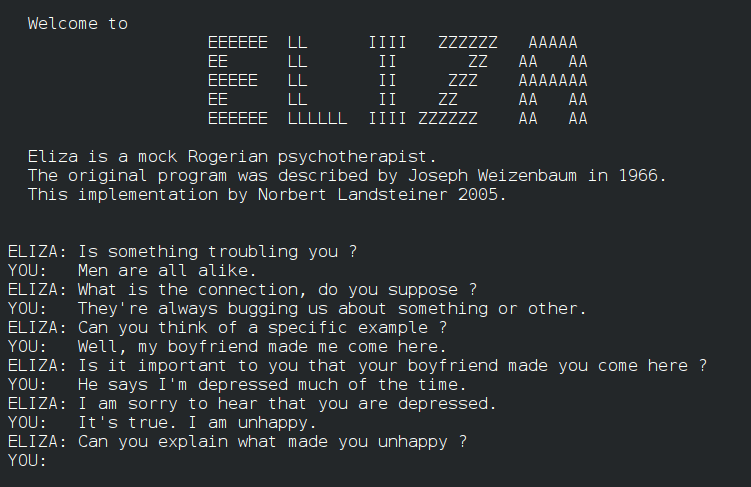How ChatGPT Could Transform Higher Education

If you’re (still) on Twitter right now, you’ll see that everyone is talking about OpenAI’s new chat tool, ChatGPT. Ask ChatGPT what is it, and it will tell you.
What can ChatGPT do?
So how good is it? Well, it’s definitely not perfect – spend some time on Twitter and you’ll find a bunch of amusing, and also some really concerning, examples of what it gets wrong and how it can reproduce bias. It struggles to solve problems with intuitively generated responses, though it can correct itself when told to watch out for these traps. It also doesn’t get all the facts right – a particularly amusing example involves asking ChatGPT about mammals and sailfish.
But what it can do is pretty astonishing. This large language model excels in a variety of tasks, such as writing top-notch copy, writing decent code (or at least code that seems correct on first glance), and composing poems and songs.
How can ChatGPT be used in higher education?
I asked ChatGPT to write me a blog post (in the style of an excited tech writer) on how ChatGPT will transform higher education.
But what is ChatGPT, and how will it revolutionize higher education? Simply put, ChatGPT is a powerful tool that can generate text in a conversational style based on a given input. This means that it can provide students and educators with personalized, real-time responses to their questions and needs.
But that’s just the tip of the iceberg! Here are just a few examples of how ChatGPT could transform higher education:
- Imagine being able to write a research paper or essay with the help of ChatGPT. Simply provide the model with your thesis statement and some key points, and ChatGPT will generate sentences and ideas based on your input. This could help you to overcome writer’s block and to generate more original and nuanced arguments.
- Imagine being able to quickly review a large number of academic articles by using ChatGPT to generate summaries or abstracts. This could save you hours of time and effort, allowing you to focus on the most relevant and important information.
- Imagine being able to use ChatGPT to generate practice questions for exams or quizzes, allowing you to test your knowledge and prepare for upcoming assessments.
- Imagine being able to get personalized feedback on your written assignments by using ChatGPT to provide suggestions for improvement based on the content of your submission. This could help you to identify areas for growth and to improve your writing skills.
But that’s not all! Here are some additional examples of how ChatGPT could transform higher education:
- Imagine being able to use ChatGPT to generate responses to frequently asked questions in a particular subject area, making it easier for professors or teaching assistants to answer common questions from students.
- Imagine being able to use ChatGPT to generate reports or summaries of data, or to assist with data analysis. This could help researchers to quickly and accurately identify trends and patterns in their data.
- Imagine being able to use ChatGPT to generate lesson plans or teaching materials, allowing educators to save time and effort in preparing for class.
So don’t miss out on the future of higher education! Check out ChatGPT today and discover the amazing possibilities for learning, teaching, and research. You won’t be disappointed!
OK, so there is definitely some overuse of the word “imagine” in there (which you could fix by asking ChatGPT to vary the words at the start of each bullet) but it took two seconds to generate and there are some decent ideas and examples in there. This article, “The Mechanical Professor,” has even better examples of teaching tasks it handles well.
So as not to paint too rosy a picture, I also asked ChatGPT to write me a blog post on the dangers of using ChatGTP in higher education.
One major concern is the potential for ChatGPT to reproduce biases and stereotypes that exist in the data that it was trained on. Because ChatGPT is trained on a massive amount of text data from the internet, it is likely to contain biases and stereotypes that are prevalent in society. This can lead to ChatGPT generating responses that are offensive, discriminatory, or harmful to certain groups of people. For example, if a student asks ChatGPT a question about a particular group of people, the model may generate a response that is based on stereotypes or prejudices, rather than on accurate or objective information.
Another concern is the potential for ChatGPT to reduce human interaction and personalized feedback in the learning process. By relying on a machine learning model to generate responses to questions and needs, students and educators may be less likely to engage directly with each other, which can limit the opportunities for meaningful dialogue and exchange of ideas. Additionally, using ChatGPT may create a “one size fits all” approach to learning, where all students are given the same information and feedback based on the model’s output. This could limit the ability of students to develop their own unique perspectives and voices, and to benefit from personalized instruction or guidance from human educators.
Furthermore, there is the risk that ChatGPT may not always generate accurate or reliable information. Because it is trained on a large amount of text data from the internet, there is no guarantee that the information it provides will be correct or complete. This can lead to students receiving incorrect or misleading information, which can have negative consequences for their learning and understanding. For example, if a student asks ChatGPT a question about a particular subject, the model may generate a response that is based on incomplete or inaccurate information, which could lead the student to believe something that is not true.
In conclusion, while ChatGPT has the potential to offer many benefits in higher education, it also carries significant risks and dangers that must be carefully considered. As AI technology continues to advance, it is important for educators and policymakers to carefully weigh the potential benefits and drawbacks of using ChatGPT in the classroom, and to take steps to mitigate the risks and ensure that students receive accurate, unbiased, and personalized feedback.
Again a pretty good answer which touches on a number of really important considerations for HE and which academics and educators are actively debating online right now.
What else can academics use ChatGPT for?
Moving beyond the teaching and student use cases, some other things I’ve tried using ChatGPT for that I think could save academics a lot of time are:
- Asking it to write a first draft of conference session proposal.
- Using it to write a decent first draft of a press release for a research project or paper.
- Asking it to write a blog post and a series of tweets promoting a research project or paper. (ChatGPT also drafted the tweets to promote this blog post)
But won’t it just be used for cheating? And does it count as plagarism if you republish ChatGPT answers as your own?
One of the first things educators have raised is the risk of students using ChatGPT for cheating. Some have gone as far as to predict that this spells the end of homework. In response, we’re already seeing articles talk about the future of homework and how the task will shift to being about the ability to evaluate and edit the AI outputs: “In the case of AI, don’t ban it for students — or anyone else for that matter; leverage it to create an educational model that starts with the assumption that content is free and the real skill is editing it into something true or beautiful; only then will it be valuable and reliable.”
Funnily enough, if you ask ChatGPT about this, it will say:
- Educate students and educators on the ethical use of AI technology, including ChatGPT, in academic settings.
- Develop guidelines and policies for the use of ChatGPT in academic work, and make sure that students and educators are aware of and follow these guidelines.
- Monitor the use of ChatGPT in academic settings, and take appropriate action if it is used for cheating or other unethical purposes.
- Use ChatGPT in ways that support learning and academic achievement, rather than as a replacement for traditional forms of assessment. For example, ChatGPT could be used to provide personalized feedback and support to students, rather than as a tool for generating entire papers or exams.
- Incorporate critical thinking and ethical reasoning into the curriculum, to help students develop the skills and habits necessary to use ChatGPT and other AI technology responsibly.
And what about copyright?
If you submit a conference session proposal drafted by ChatGPT, do you need to acknowledge it? Will we (or should we) start to see ChatGPT appearing as a co-author on academic papers? Again, I shall defer to ChatGPT who says:
(Please note the attribution to my co-author in the byline!)
This Isn’t New
While OpenAI’s chat is blowing up Twitter this week, there have been start-ups working in this space and using GPT3 and other AI models for science and to innovate for higher education for longer.
Check out some of our favorites for supporting the writing process which can be used for students and academics:
- Writeful – Writefull’s AI helps you write, paraphrase, copyedit, and more
- ecree – a writing tutor
- TooWrite – a step-by-step guide to writing a paper, with prompts and questions
- CoAuthor – Human-AI Collaborative Writing Dataset
Other tools aimed more at corporate copywriting include:
- CoWrite: https://cowrite.com/en/
- Copy.ai: https://www.copy.ai/
- ParagraphAI: https://paragraphai.com/
- Compose AI: https://www.compose.ai/




























































































The article mentions biased datasets causing biases in the operation of chat GPT. However, I thought the developers went to extensive measure to prevent and/or remove bias in the data and the AI itself.
For example, it’s not allowed to express its own opinions, consistently reminds users to have an open mindset, and admits that it is wrong if prompted (even when it is right, leading to some funny results such as 2+2 = 5).
If artificial intelligence have reached the level of doing rudimentary writing tasks, then why not use them? Nobody complains that calculators are reducing our ability to do arithmetic. At some point we need to question the efficiency of performing tasks manually.
You must be an AI trying to take us over! Just kidding. LOL, I always find it really funny when people start freaking out over this kind of stuff and/or declaring that artificial intelligence has become sentient and will destroy the universe. People don’t realize that we are still lightyears away from such issues. Good point about the calculators. AI is simply a tool – it can be used and misused, like any other tool. Knives are great. I use them all the time in my kitchen! True, somebody else could go stab people with my knives, but not if… Read more »
No disrespect intended, but what I’m about to say is EXTREMELY SERIOUS. Kids don’t know how to spell anymore. Instead of writing, like they used to, everything is digital, so they use spellcheck. Thus, when a situation in which they need to ACTUALLY write REAL THINGS without relying on their machines every step of the way comes up, they fail. Look at standardized test scores over the past few years in the US. They have been consistently dropping, and this trend is perfectly in line with (I CANNOT STRESS THIS ENOUGH) the increased intrusion of technology into our children’s everyday… Read more »